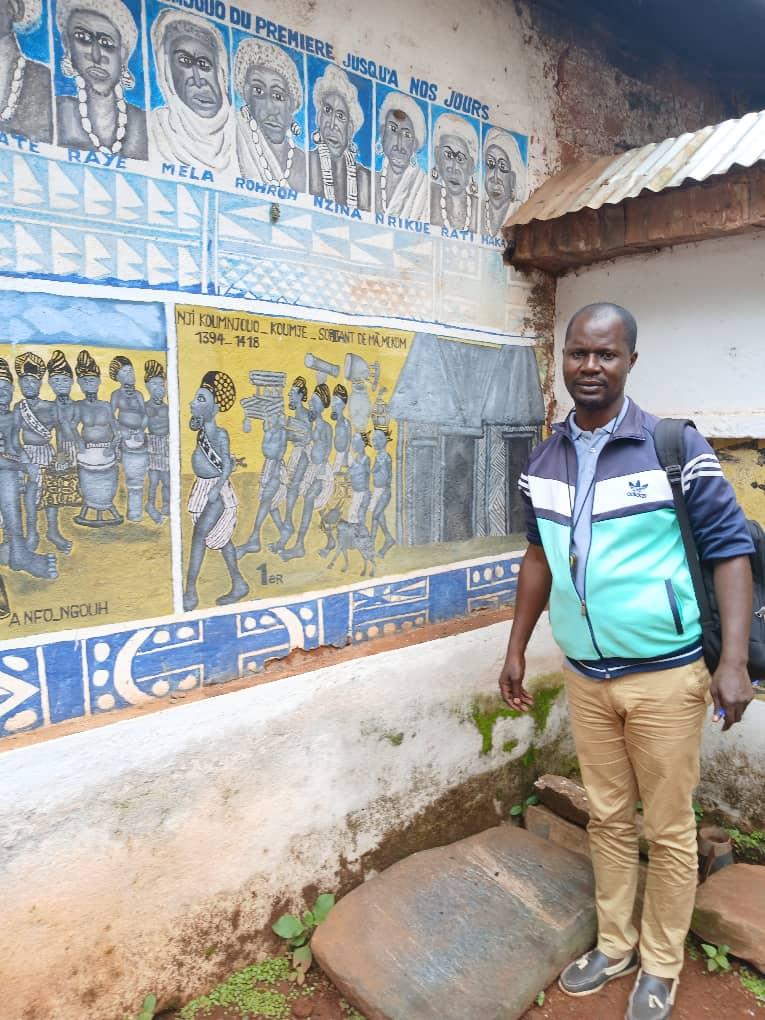Hubert Mounmemi Kpoumie
Other projects
30 May 2023
Inventory of Cultural Practices and Local Management Strategies Contributing to the Conservation and Sustainable Use of the Sacred Forests of Bayangam, Cameroon
The Bamoun Kingdom in West Cameroon has traditions that go back hundreds of years, but these are under pressure due to the rise of religions such as Islam and Christianity. The vestiges of these ancestral traditions, the sacred forests, despite their important role in the socio-economic and cultural life of the population, are under threat from human activities. These ecosystems remain poorly explored in the Bamoun Kingdom. Hence, their study provides an opportunity to better analyse and understand the involvement of religion in biodiversity conservation in Cameroon.

Hubert during the preliminary visit to the Chiefdom of the first notable Bamoun, Nji Koumnjouo (1394–1418). © Hubert Mounmemi Koumi.
This work will be carried out in five sacred forests of the Bamoun Kingdom, particularly in the Njimon subdivision. This town represents the historic site of the Bamoun Kingdom. It was the place where the first Sultan of the Bamouns settled in 1394. These forest islands, representing fragments of forest, are reservoirs of biodiversity and play a major role in conserving the kingdom's flora and fauna.
To assess the interest of local communities near the sacred forests, semi-open questionnaires will be used. In each of these villages, interview sessions will be conducted in groups and then individually. For the focus group discussions, mixed groups will be constituted, respecting gender balance norms to maximise information collection. Semi-structured interviews will be conducted with administrative and traditional authorities. Resource person interviews will target customary authorities, guardians of divinities, notables, and older persons believed by the community to hold in-depth knowledge of sociocultural practices, religion, and the management of natural resources.
For the ethnobotanical survey of medicinal plants, the survey will be based on a selection of herbalists for their ability to treat diseases and/or associated symptoms using plant parts. In addition, elderly people who can provide useful and original information on the use of medicinal plants will be surveyed.
In this study, floristic data will be collected in 25 m × 25 m plots. A zoning map of the sacred forests will be drawn using geo-referenced participatory mapping.
At the end of this project, several concrete results will be obtained. The flora of the different sacred forests will be documented and made available. The documentation of best practices based on indigenous knowledge and local know-how will be promoted within the project's beneficiary communities. A sacred forest conservation strategy document will be developed based on information collected during the training and awareness-raising workshop on indigenous best conservation practices.